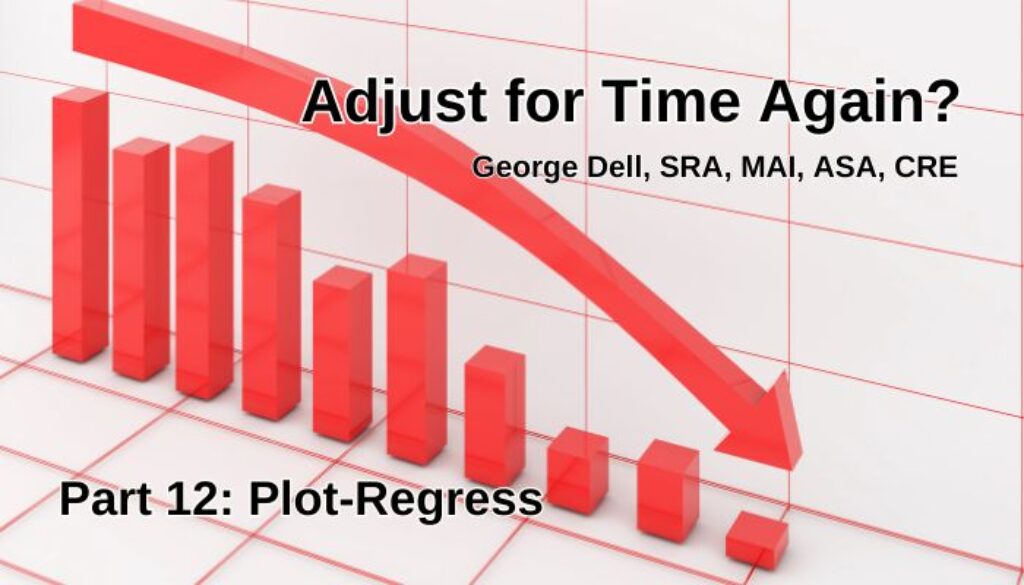In this post, Adjust for Time, Part 12, (read the whole series here) the FHFA Working Paper 24-07 infers a third “common strategy” for time adjustments. We will call this the plot–regress method. In this strategy “MLS data on individual sales can be retrieved, and the appraiser can regress sales price on a time trend as well as plot the data to look for nonlinearities.”
We look at plot-regress from three viewpoints: FHFA, AI-ARE, and USPAP, and later, CAA (Community of Asset Analysts) best practices.
I find this description of the method to be concise. It may be because this method is easier to explain in words than any deeper explanation of “matched-pair” and “grouped-pair” analysis.
This “FHFA” explanation considers five important elements:
- It notes the most common data source – MLS;
- The mathematical algorithm – a regression;
- A time trend calculation – on time period;
- Visual representation of the data; and
- And trend change “non-linearities.”
The Appraisal of Real Estate 15th ed. (ARE), discusses “trend analysis” and “graphic analysis”:
- “Trend analysis is applicable when a ’large’ amount of market data is available.” (p. 374) [Author’s Note: How large is large enough? A coming part of this series considers this ‘enough’ issue. We provide guidelines for the trade-offs of bias, variance, and completeness of the data used.]
- “In curve fit analysis, different formulas may be employed to determine the best fit for the market data being analyzed.” (P. 374) [Author’s Note: a coming part of this series considers the most common curve-fits for the common time periods for appraisal market segments.]
- “Trend analysis … is using historical data and statistics to draw inferences about the future [date of value], … often defined as analysis of a time series.”
- “Graphic analysis is used in cases when less data is available.” “The nature of the data analyzed … will dictate how the results of the analysis can be used, either as an adjustment or as a qualitative indicator.” (p. 376). [ We find that using today’s EBV (Evidence Based Valuation)© methods greatly reduce the need for adjustments, and the uncertainty which comes from the adjusting of adjustments.]
- [We are unaware of any ARE-suggested methods specific to identifying trend change in this context. However, the use of the scatterplot and simple regression is easily adaptable to detect and measure current and predictive trend change indicators.]
USPAP (Uniform Standards of Professional Appraisal Practice) Rule 1-3 does require “market area trends” and disallows “an unsupported assumption or premise about market area trends.”
The USPAP Scope of Work Rule does require that the appraiser:
- Identify the type and extent of data researched;
- Provide results “support[ed] by relevant evidence and logic.”
- Gather and analyze information … the subject relevant characteristics.
Education (free and CE) on market analysis principles, practices, and mechanics are available at Valuemetrics.info, and at George Dell’s Valuemetrics YouTube Channel.
“WE MEASURE MARKETS, NOT COMPARE COMPS.“
